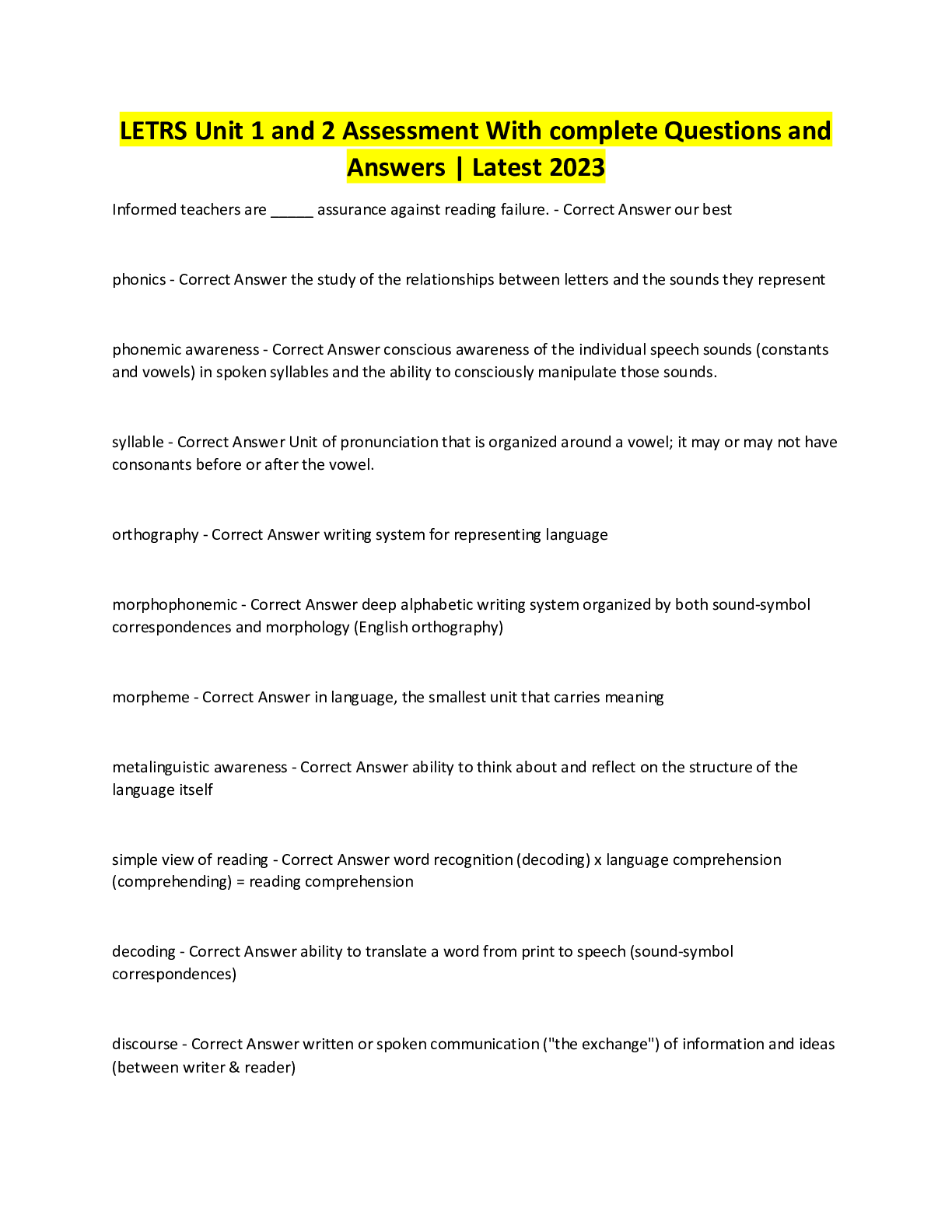*NURSING > EXAM > Nursing ATI Pediatric practice B complete updated 2021 questions and answers (100% Satified) (All)
Nursing ATI Pediatric practice B complete updated 2021 questions and answers (100% Satified)
Document Content and Description Below
ATI Pediatric Practice B. • A nurse is collecting date from a school-age child. The nurse should identify that which ofthe following findings is a manifestation of physical abuse? • Multiple d... ental caries • Malnutrition • Recurrent urinary tract infections • Bruises at various stages of healing (The nurse should recognize that bruises at variousstages of healing are a clinical manifestation of physical abuse.) • A nurse is reinforcing teaching with an adolescent who has an inflamed nonperforatedappendix and is scheduled for a laparoscopic assisted appendectomy. Which of the following instructions should the nurse include in the teaching? • “You can begin drinking fluids again 2 days after your surgery.” • “You will need to ask for pain medication for the first 24 hours after surgery.” • “You will have your vital signs monitored every 8 hours after surgery.” • “You will sit in your chair at least twice a day after surgery.” (The nurse should instruct the client that she will sit in a bedside chair at least twice a day and will be encouraged toambulate as soon as possible following surgery. This activity will enhance lung function and help prevent postoperative complications.) • A nurse is reinforcing teaching about sudden infant death syndrome (SIDS) with the parentof a 1-month-old infant. Which of the following statements by the parent indicates an understanding of the teaching? • “I will let my baby sleep with me in bed at night.” • “I will allow my baby to have a pacifier while sleeping.” (The nurse should reinforcewith the parent that allowing the infant to fall asleep with a pacifier in his mouth decreases the risk for SIDS.) • “I will place my baby on a soft mattress to sleep.” • “I will cover my baby with a quilt while he sleeping.” • A nurse is assisting with the care of a child who is postoperative and received a transfusionduring a surgical procedure. Which of the following findings indicates the child is havig a hemolytic reaction? • Chills and flank pain (Chills and flank pain are findings that indicate an incompatibilityof the transfused blood product with the client's blood. The nurse should identify this finding as an indication that the child is having a hemolytic reaction.) • Pruritus and flushing • Rales and cyanosis • Bradycardia and diarrhea • A guardian calls the clinic nurse after his child has developed symptoms of varicella and asks when his child will no longer be contagious. Which of the following responses shouldthe nurse make? • “When your child no longer has a fever.” • “Three days after the rash started.” • “Six days after lesions appear if they are crusted.” (The nurse should inform the guardian that a child will stop being contagious around 6 days after the lesions appeared, as long asthey are crusted over.) • “When your child’s lesions disappear.” • A nurse is collecting date from a child during a well-child visit. The nurse should recognize that which of the following findings places the child at a higher risk for abuse? • The child is 6 years old. • The child is male. • The child was born at 30 weeks of gestation. (The nurse should identify that childrenwho are born prematurely are at greater risk for abuse because of the potential for impaired bonding during early infancy.) • The child was born via cesarean birth. • A nurse is reinforcing teaching with the guardian of a child who has a new diagnosis ofrheumatic fever. Which of the following statements by the guardian indicates an understanding of the teaching? • “I should not give my child aspirin for pain or fever.” • “My child will take antibiotic for 6 months.” • “My child might have a period of irregular movement of the extremities.” (The nurse should instruct the guardian that the child might experience chorea weeks or months after the initial diagnosis. Chorea is a temporary lack of coordination and the presence ofsudden, irregular movements or periods of clumsiness.) • “I should expect there to be blood in my child’s urine.” • A nurse is collecting data from an infant during a well-child visit. Which of the followingsites should the nurse use when obtaining the infant’s heart rate? • Apical (The nurse should use the apical pulse to obtain the infant's heart rate and count itfor a full minute, because it gives a reliable rate and rhythm and provides accurate baseline assessment data. In an infant, the apical heart rate is auscultated at the fourth intercostal space lateral to the midclavicular line.) • Radial • Carotid • Femoral • A nurse is preparing a toddler for suturing of a minor facial laceration. The nurse shouldplace the toddler in which of the following restraints? [Show More]
Last updated: 1 year ago
Preview 1 out of 15 pages
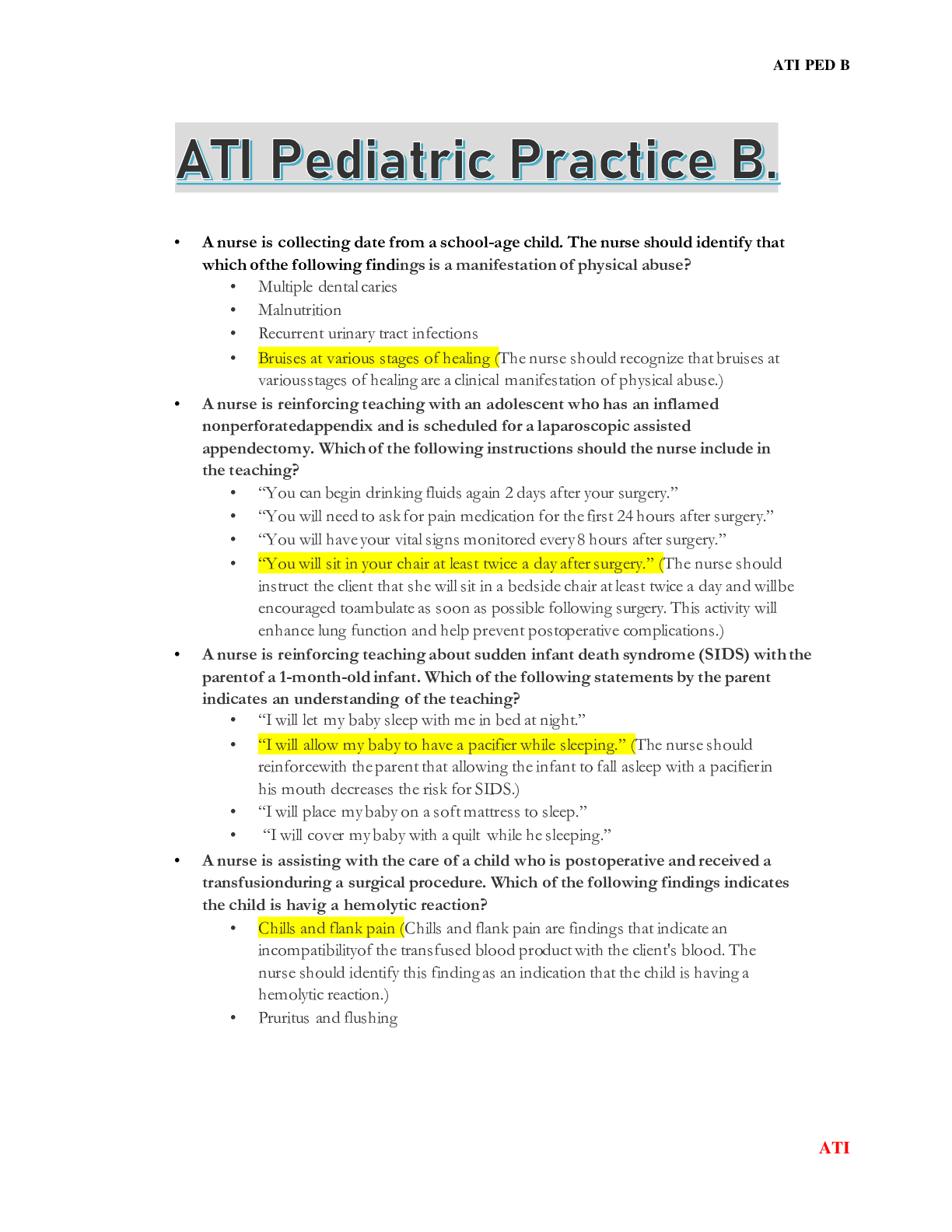
Reviews( 0 )
Document information
Connected school, study & course
About the document
Uploaded On
Feb 05, 2022
Number of pages
15
Written in
Additional information
This document has been written for:
Uploaded
Feb 05, 2022
Downloads
0
Views
35





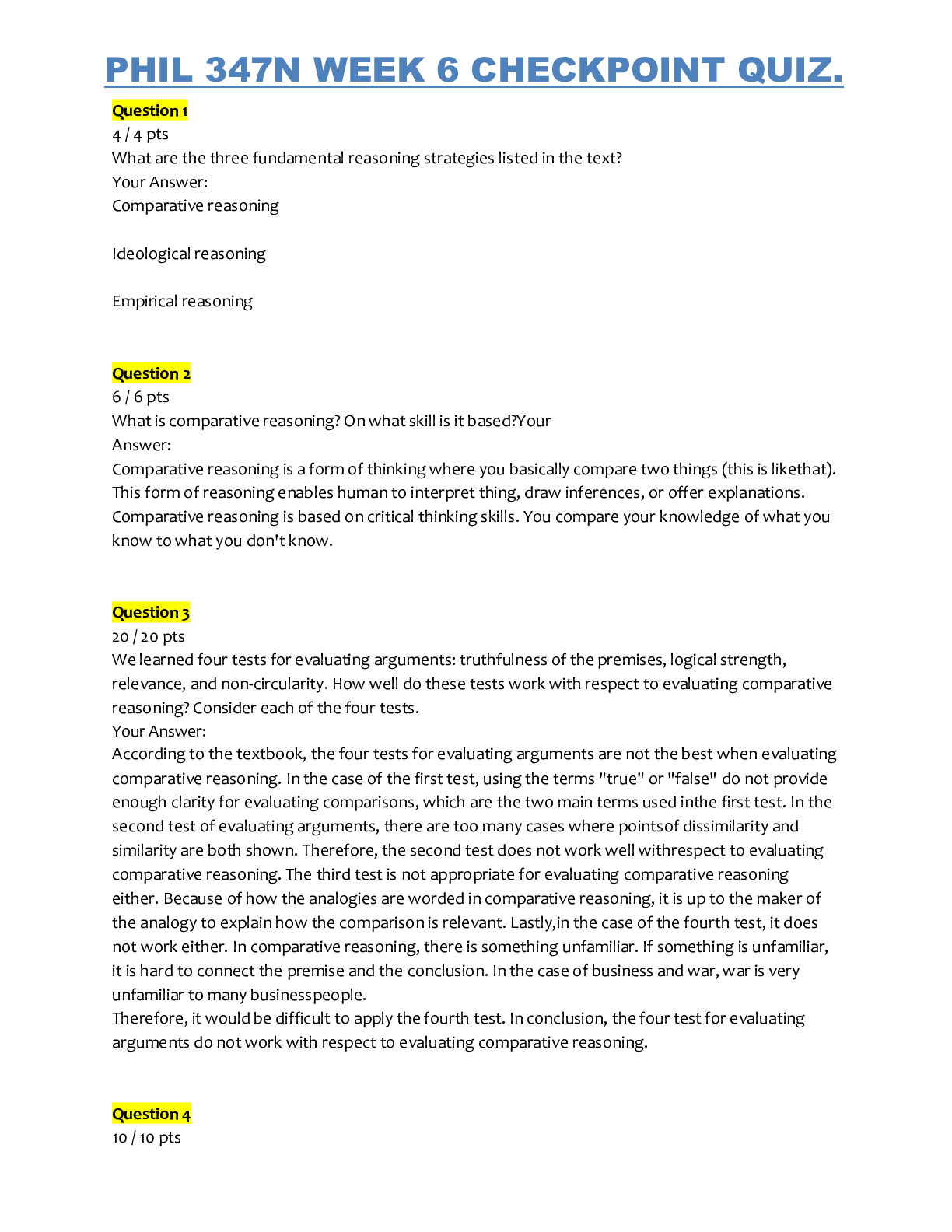
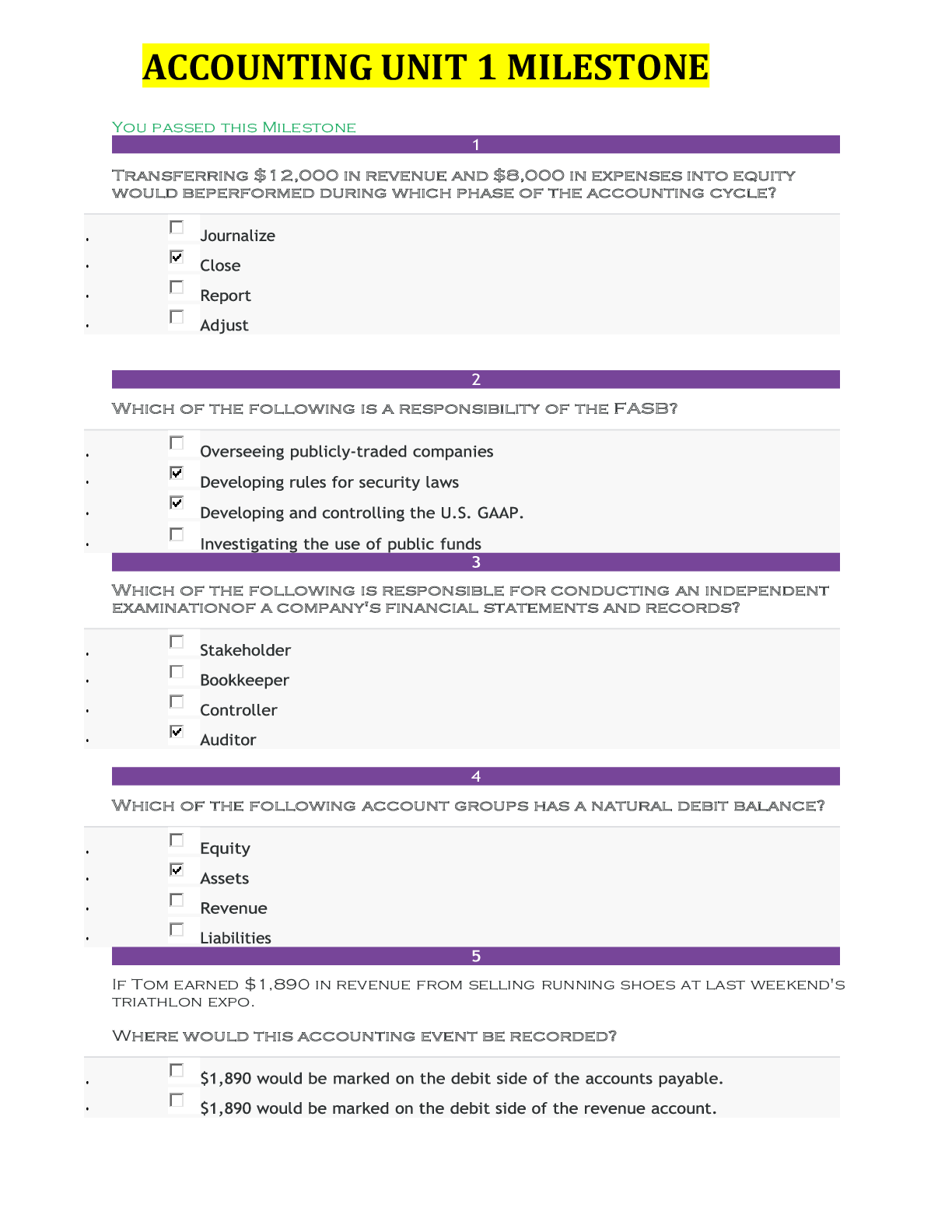
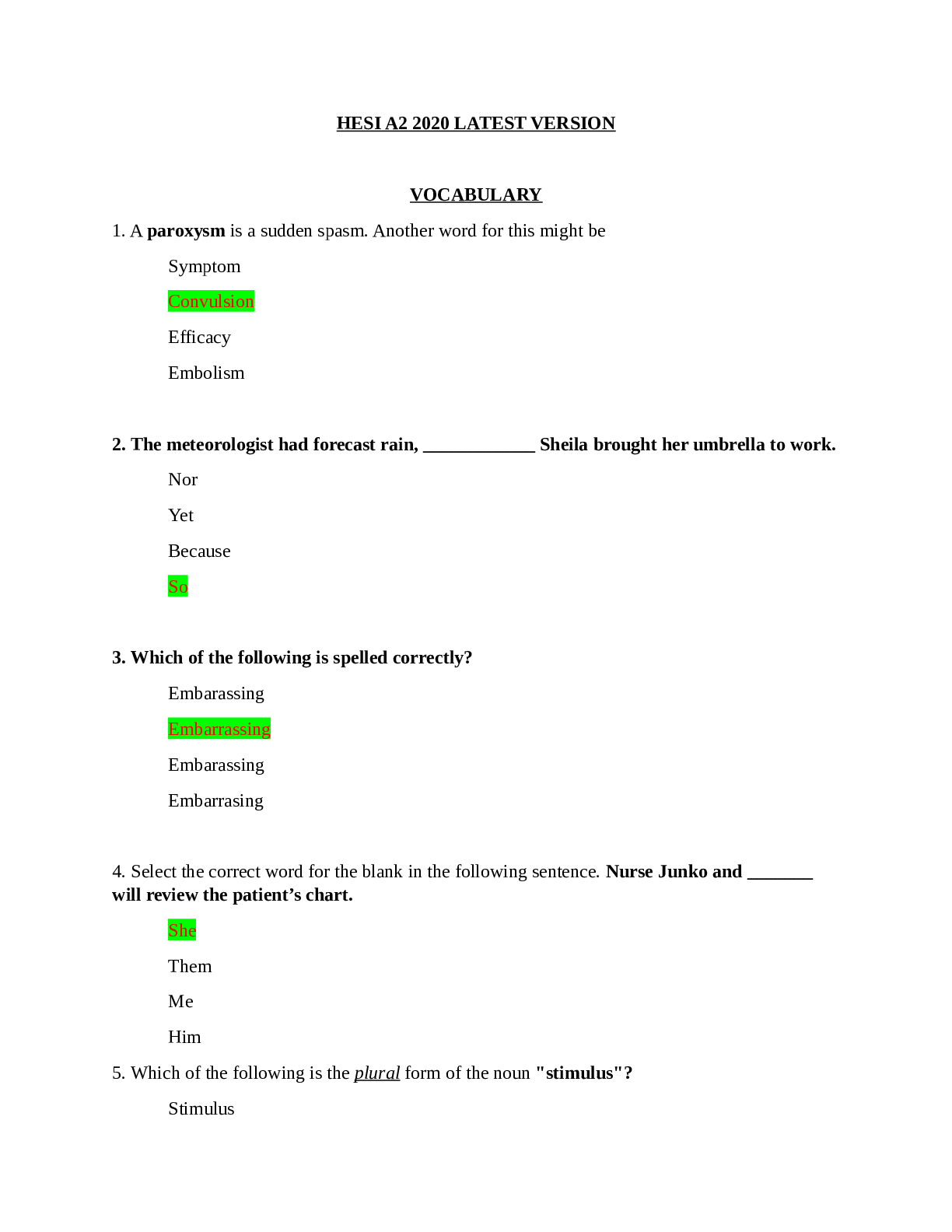
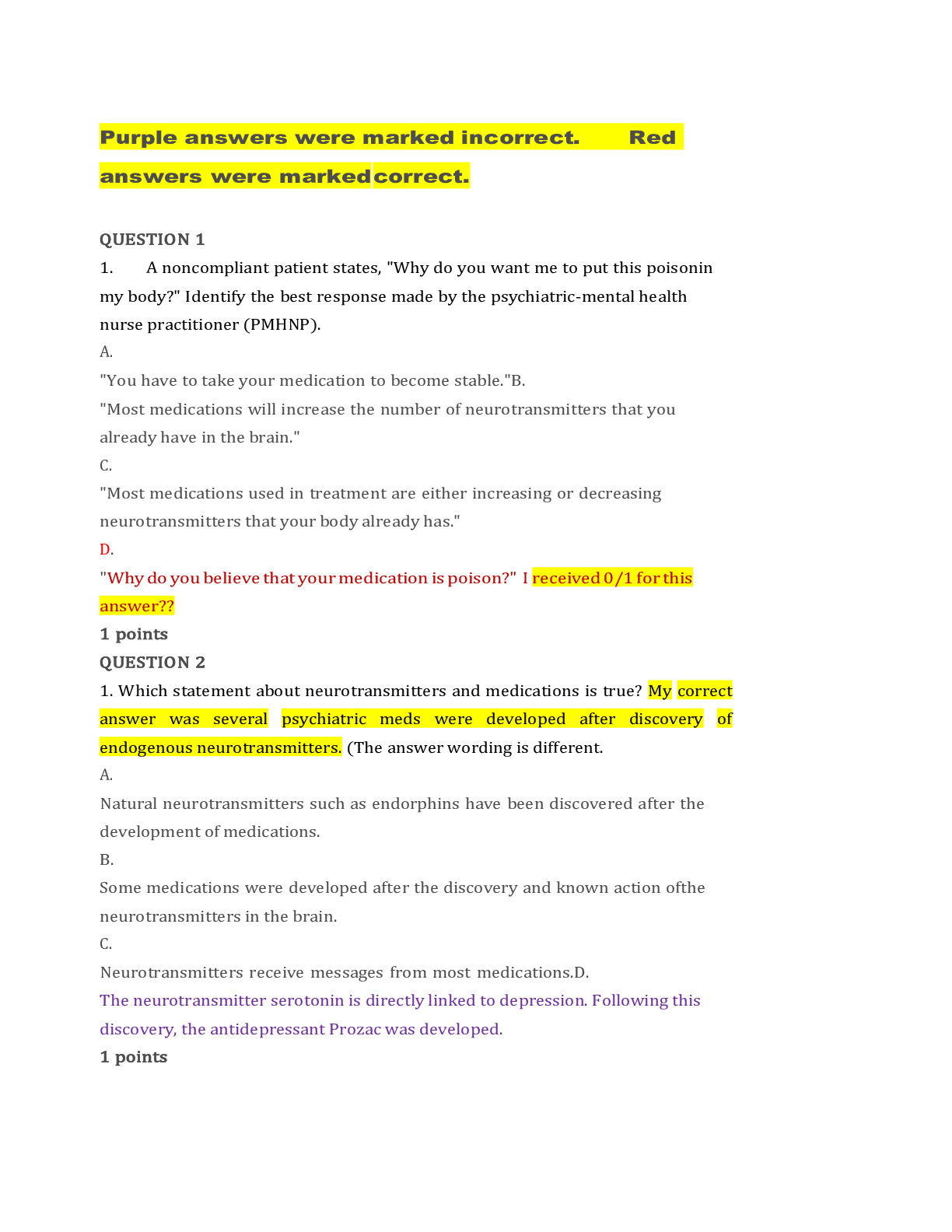
.png)
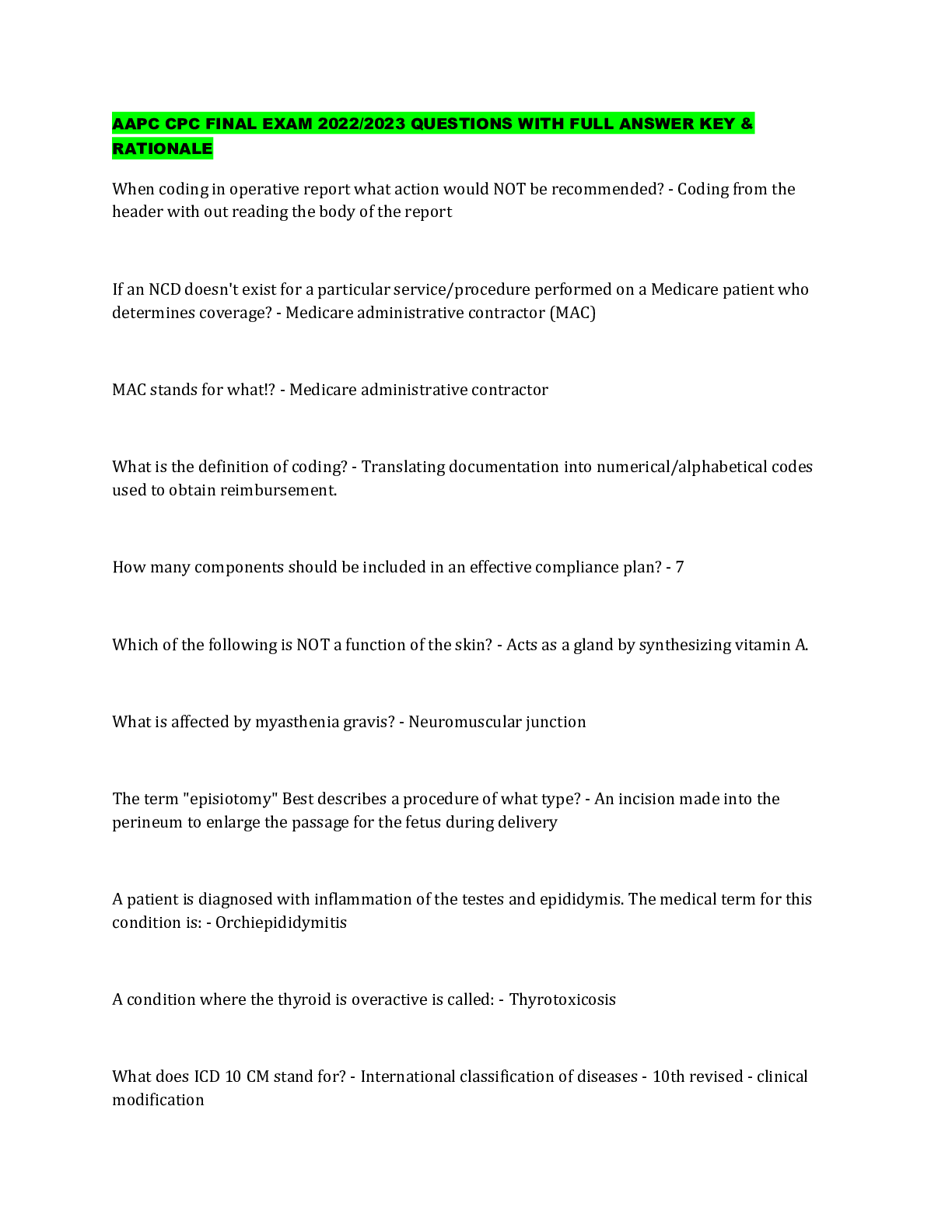
.png)
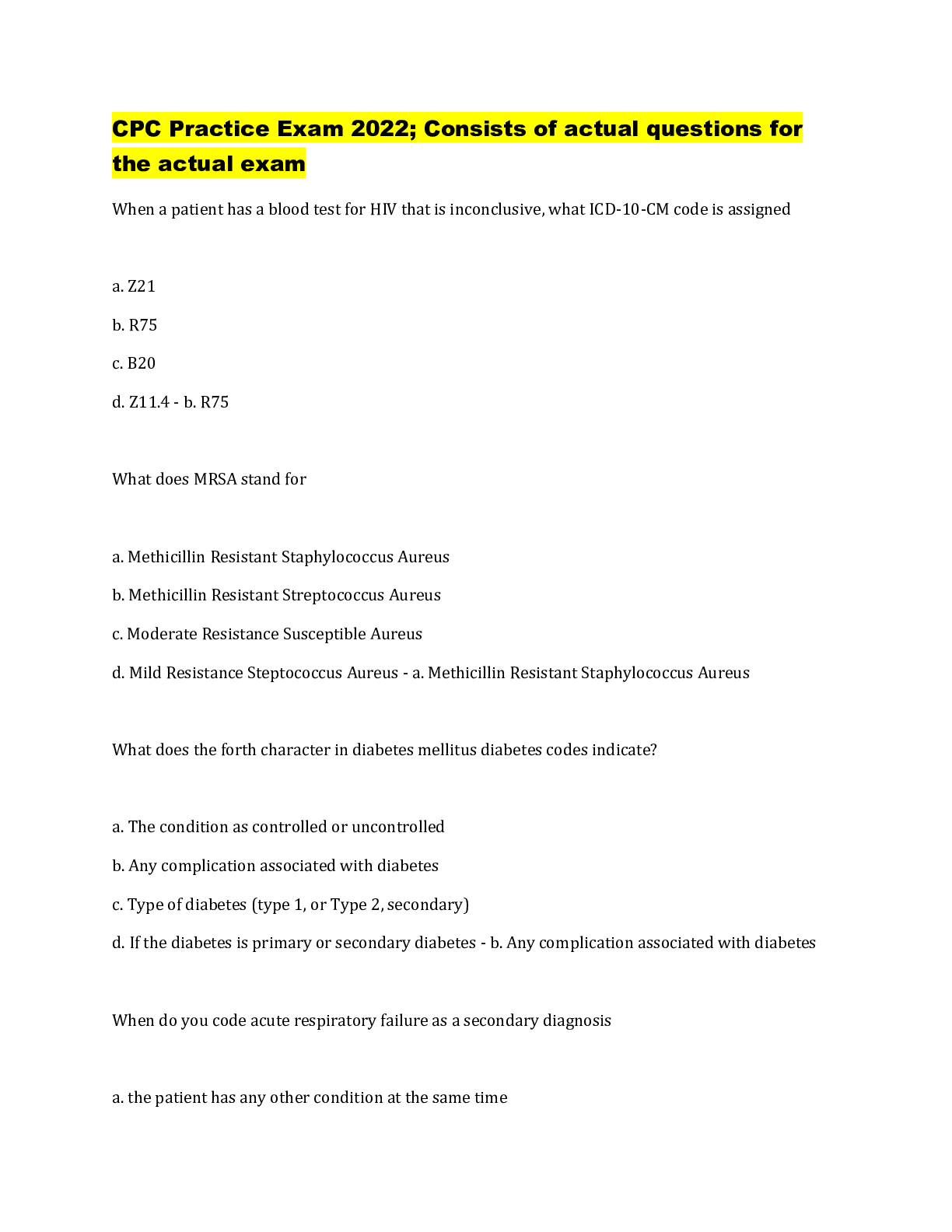
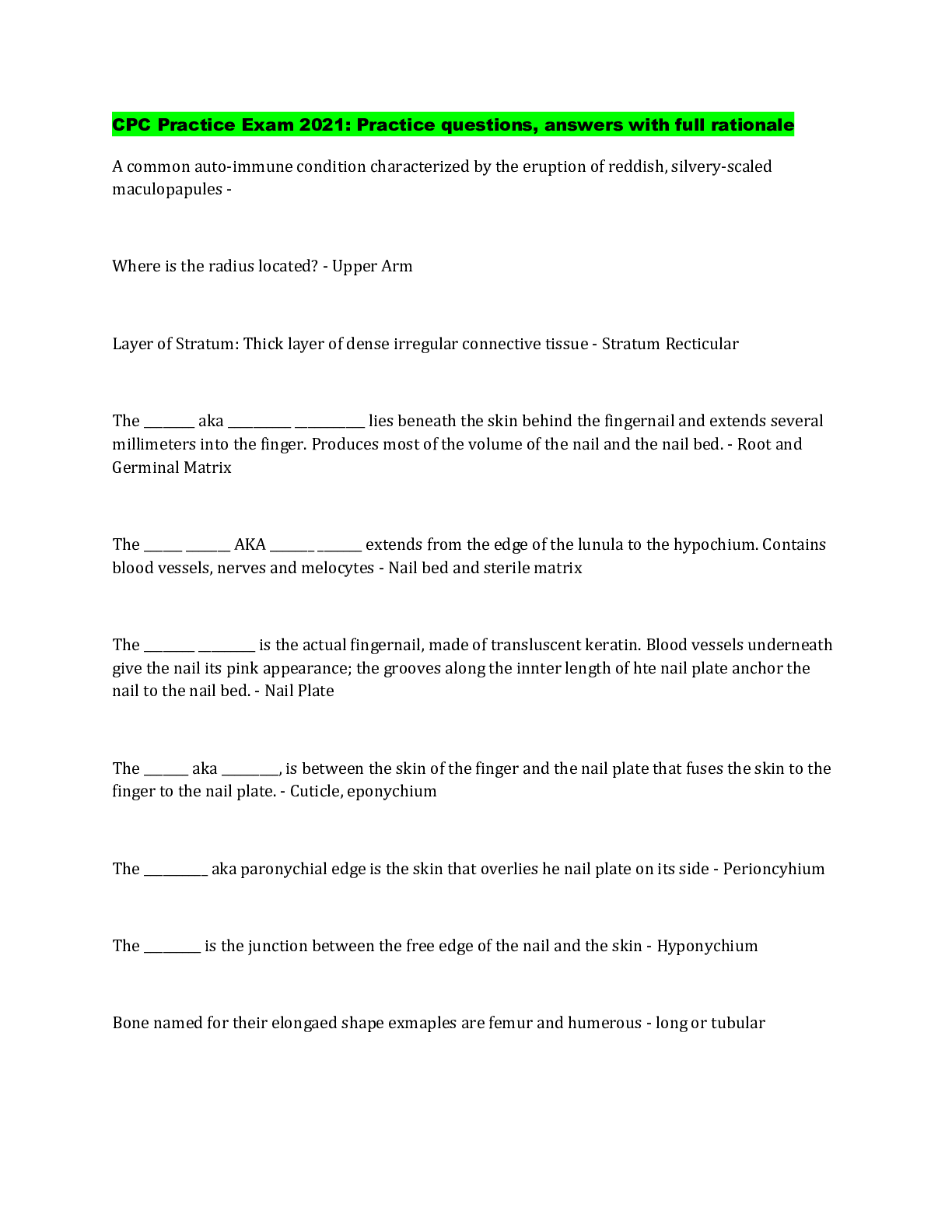

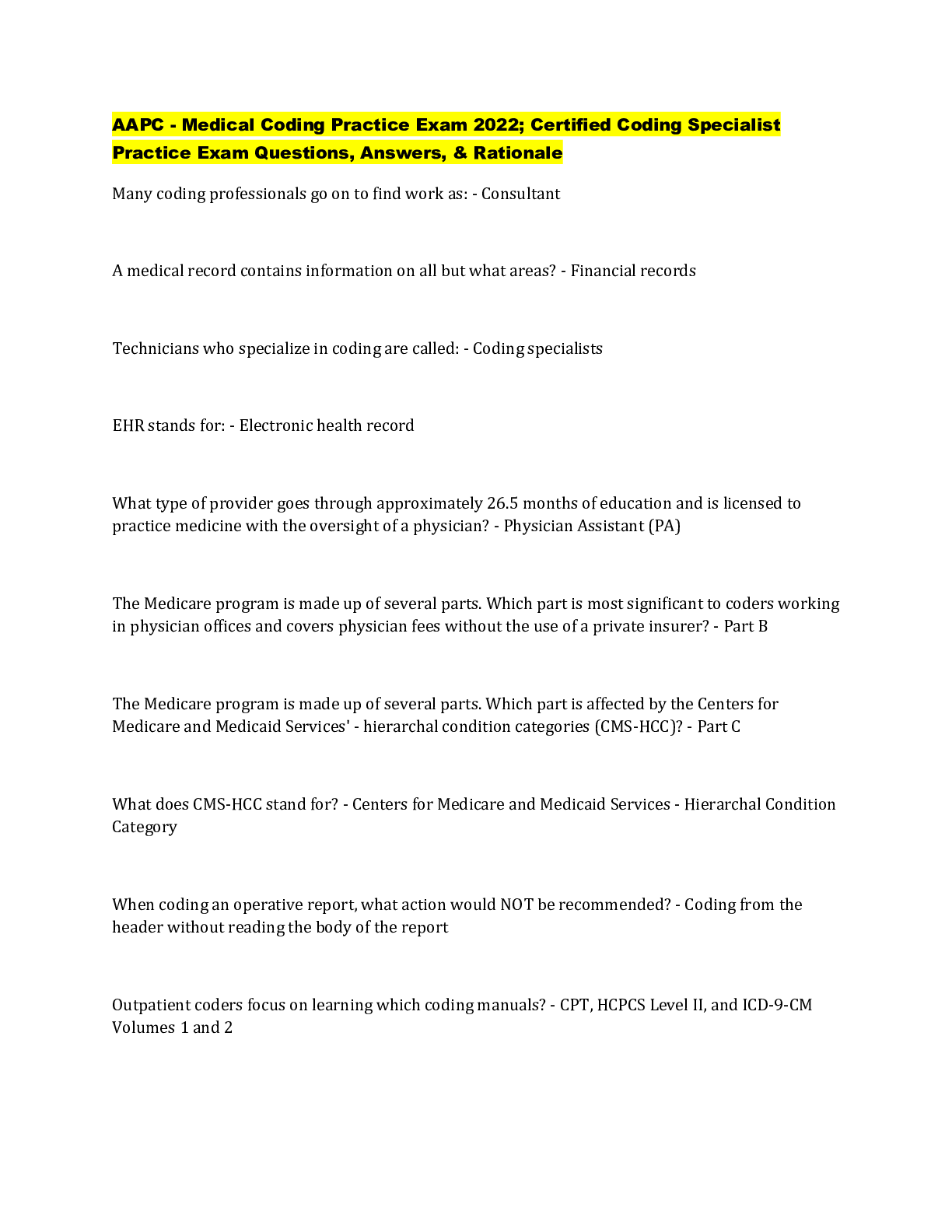



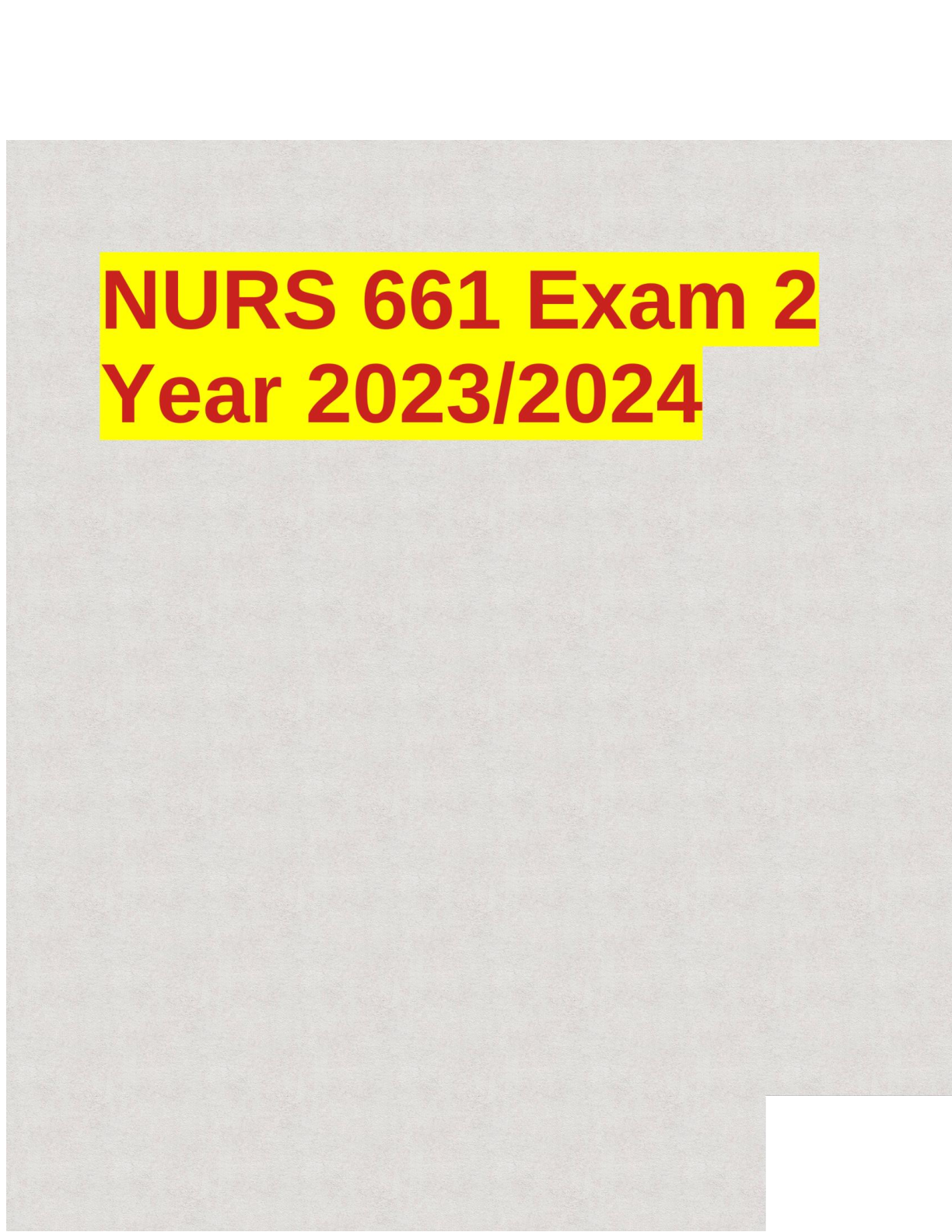



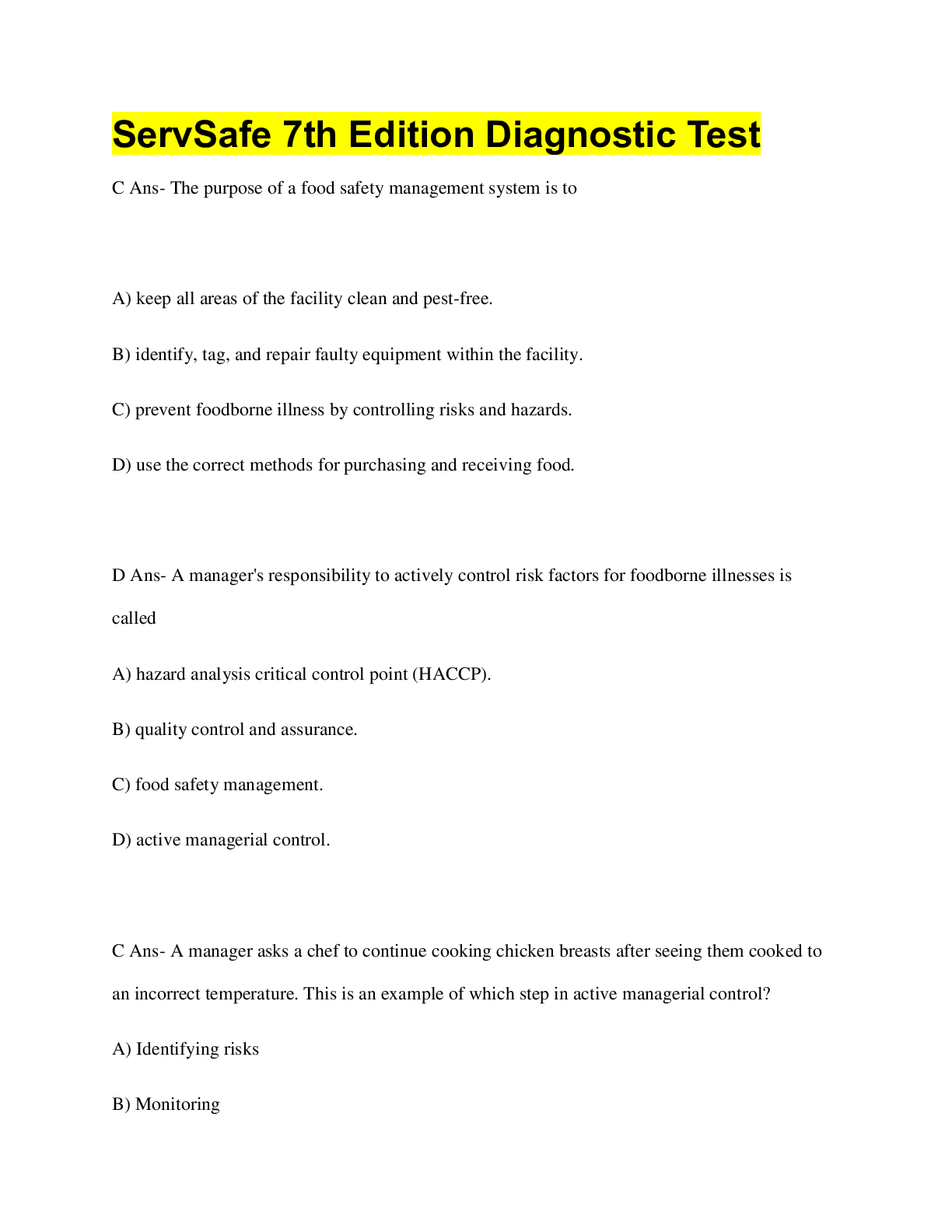
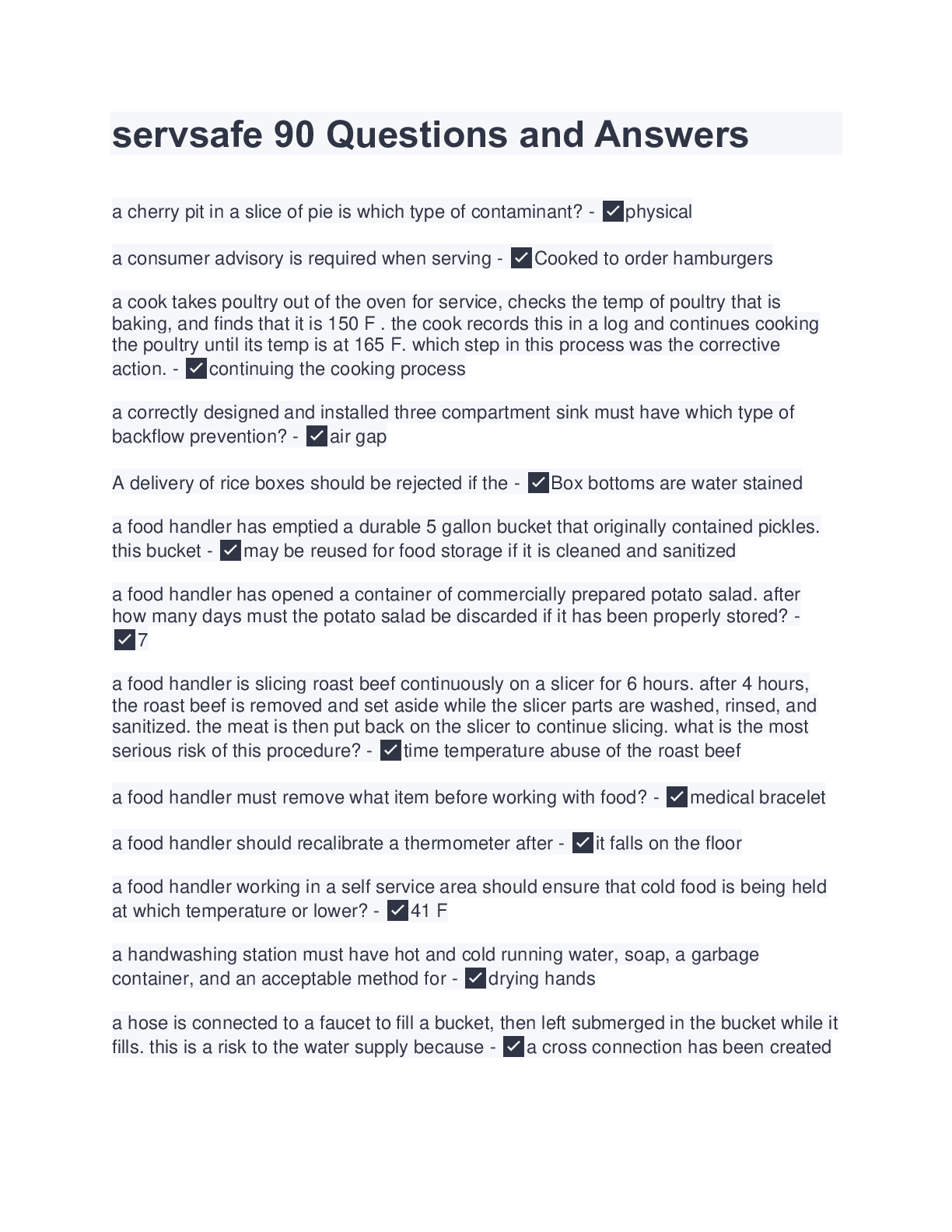
.png)







